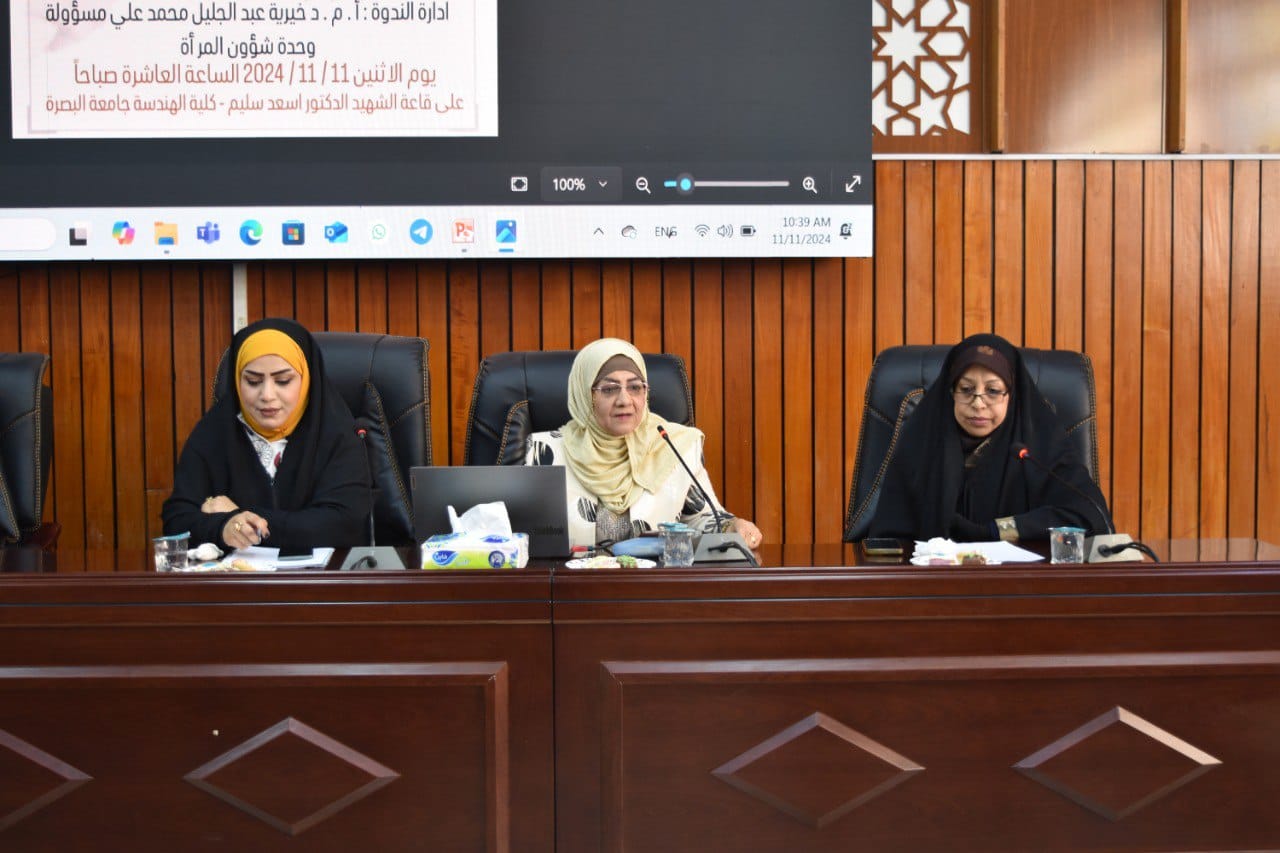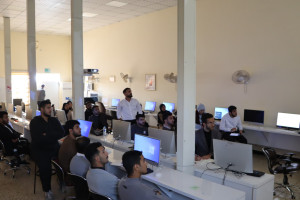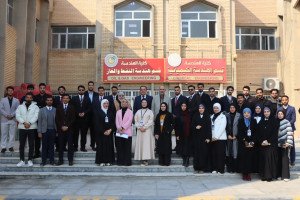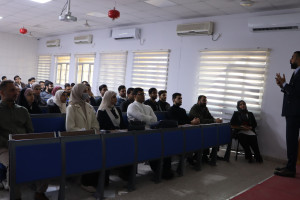The Women's Affairs Unit of the College of Engineering at the University of Basra held a symposium on domestic violence entitled "Domestic Violence is a Prevalent Phenomenon in Society". The symposium, which was lectured by Dr. Hana Abdul Nabi Al-Abbadi, Head of the Guidance Unit at the College of Education for Girls, Dr. Khairiya Abdul Jalil, Head of the Women's Affairs Unit at the College of Engineering, and Ms. Duaa Muhammad Khalifa, a lecturer at the College of Education for Girls, included a definition of the phenomenon of domestic violence. This is the text of the speech: Domestic violence is a method of unwanted dealing with others, characterized by aggression and depends on the circumstances that incite it, such as frustration, harassment, deprivation, harm, discrimination in parental treatment and its badness. Its source is the accumulation of previous stored experiences that children were exposed to in childhood, which they grew up on, or it may be an acquired behavior through learning and observation from the environment surrounding the individual, especially the family, or it may be a compensatory behavior for a deficiency. If the individual's personality is fixed on these values and continues with him, it becomes difficult to change it. Family and community violence is instilled in the souls of children to the point that we imagine that it is inherited. The phenomenon has Domestic violence is of interest to researchers and specialists in the fields of education, psychology and sociology, as it represents the most dangerous problems threatening the family and society, although most societies, especially Arab societies, conceal cases of domestic violence and prefer not to disclose them, as they are among the most dangerous problems threatening the family and society, although most societies, especially Arab societies, conceal cases of domestic violence and prefer not to disclose them, as they are family privacy and to preserve reputation according to customs and traditions, ignoring the extent of the resulting damage and causing many crises that continue with children and individuals from childhood to adulthood, especially parental violence between them, as these scenes remain rooted in the minds and involuntarily turn into future inherited behavior that moves from one stage to another, as children in particular and adolescents of both sexes are affected by forms of violence directed against them by one of the family members, and the strong tries to impose his control over the weak, which is often the wife, children and adolescents, especially females, and it is not necessary for the father to be the one who practices violence, as it may be the grandfather, uncle, maternal uncle or older brother, and whether this violence is moral (psychological or verbal) or material (Physically) It leaves long-term negative effects, especially on teenage girls. It is necessary to understand the reality of the relationship between family members and their children and adolescents and to know its nature and negative dimensions due to the family's mistreatment of children and the family's inability to confront and solve their children's problems due to poor educational policy and failure to take into account the psychological crises experienced by children and adolescents, who are the most affected by this.
Domestic violence includes many and varied patterns, the most important of which are:
Psychological violence, which is the most ambiguous and difficult type of domestic violence and affects behavioral, mental and physical functions and the decline in academic level.
Verbal violence, which is all offensive words and phrases that lead to causing psychological harm to others, such as expressions of mockery, mockery, insult, intimidation, threats, cursing, intimidation, screaming, constant criticism, belittling and belittling a person, and any type of speech that provokes feelings of pain falls under the description of verbal violence, which is one of the most widespread types of violence in societies.
Physical violence, including severe beating, hair pulling, burning, confinement in dark rooms, or even employing children in places that are not suitable for their abilities, is usually practiced by a stepfather or stepmother against those with weaker authority, such as children and girls. This pattern can be easily detected because it leaves clear marks on the body of the person against whom violence was committed, in the form of bruises, burns, or wounds. Among its negative effects on children and adolescents of both sexes is that they will suffer from difficulty in forming social relationships with their peers and a lower level of academic achievement compared to their peers who were not exposed to physical and domestic violence. To limit the spread of this phenomenon, cases of violence practiced against children and adolescents by the family, school, or environment must be taken into account, and these cases must be monitored and reported, and social institutions must develop appropriate solutions and take measures that would limit these methods and hold accountable those who practice violence against individuals and direct guidance and awareness campaigns in this regard.








